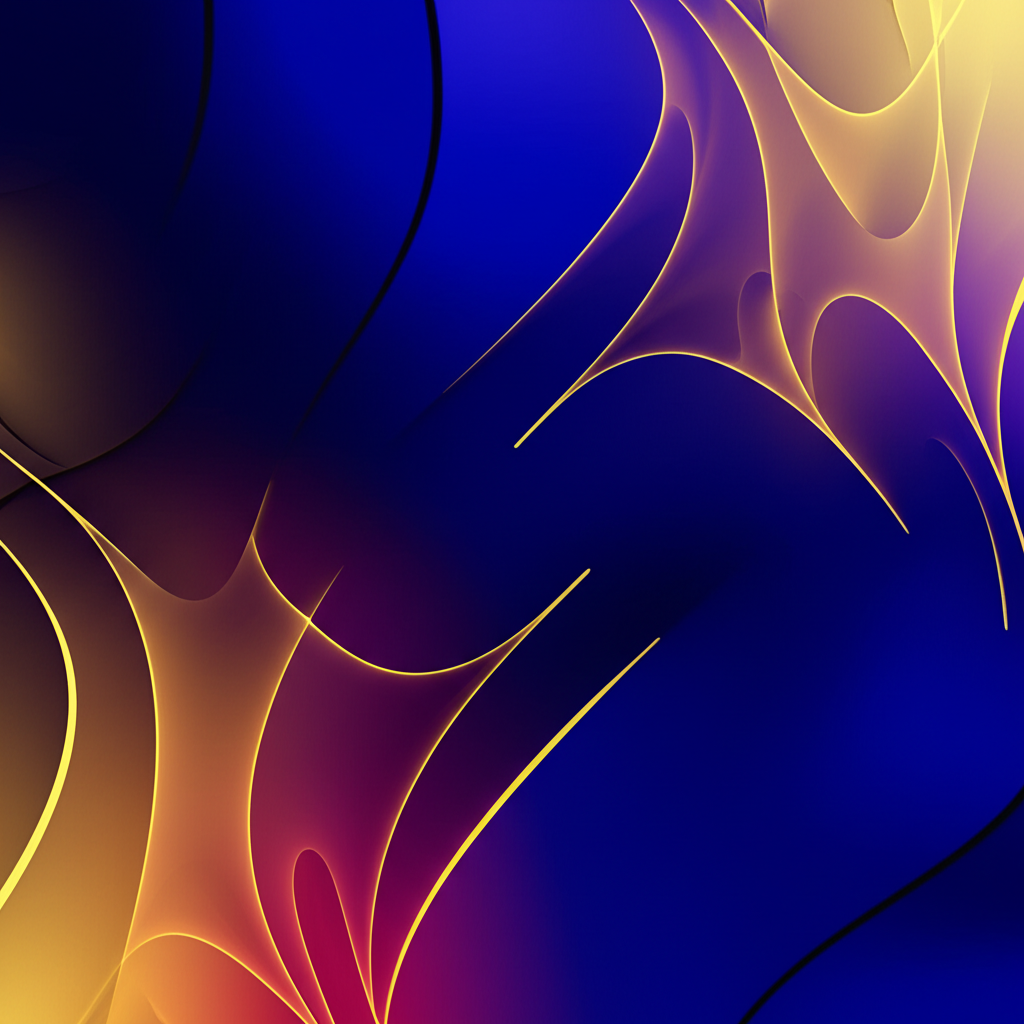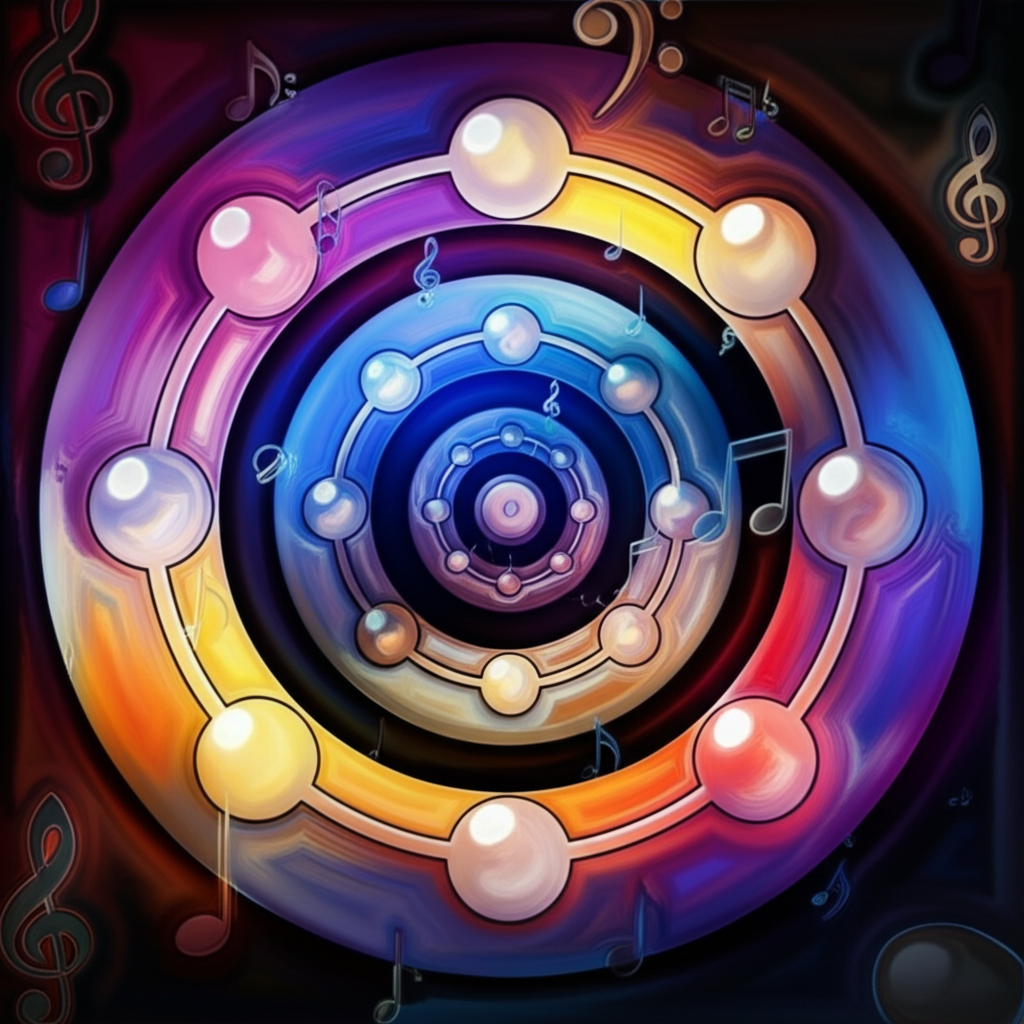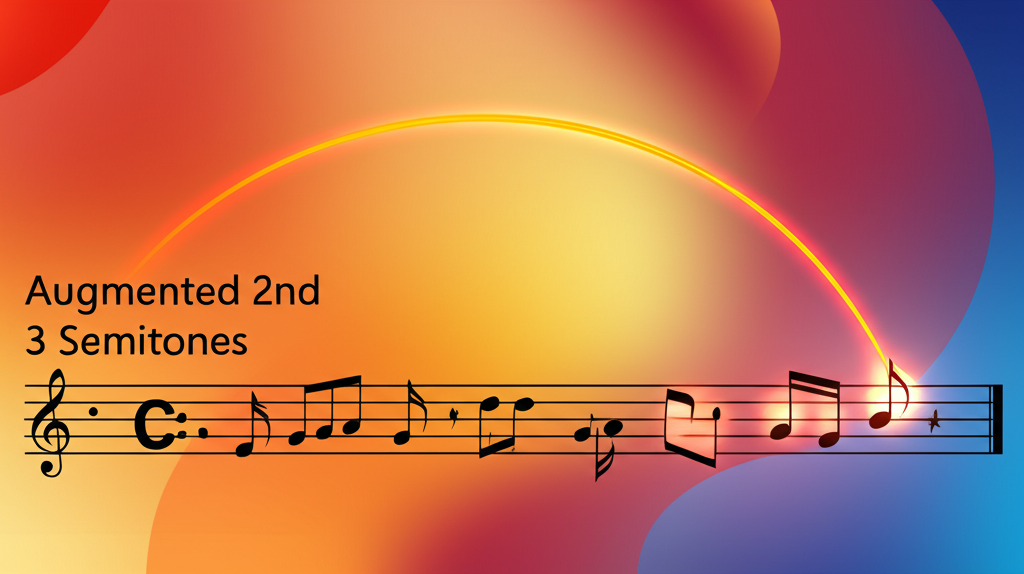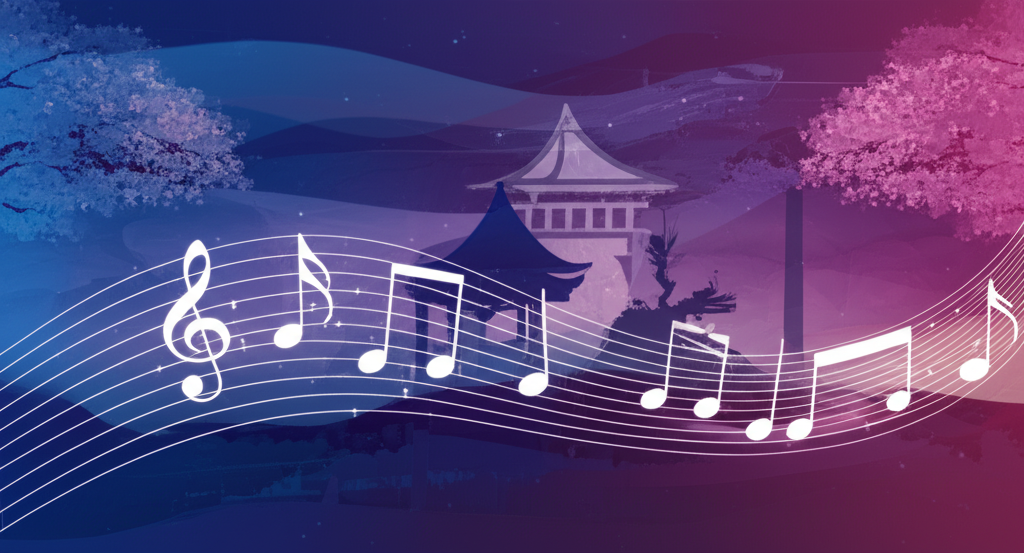
Exotic Scales: Exploring Whole Tone and Octatonic Sonorities

b4n1
May 17, 2025, 4:26 p.m.
Exotic Scales: Exploring Whole Tone and Octatonic Sonorities
Summary:
Exotic scales like the Whole Tone and Octatonic (Diminished) scales offer composers and improvisers unique sonic textures that transcend traditional Western tonality. These symmetrical structures, with their distinctive intervallic patterns, create atmospheres of mystery, tension, and otherworldliness that have been employed in classical, jazz, film, and contemporary music. This comprehensive guide explores the theoretical structure, historical development, and practical applications of these fascinating scales, providing musicians with techniques to incorporate these evocative sounds into their musical vocabulary.
Keywords:
whole tone scale, octatonic scale, diminished scale, half-whole diminished, whole-half diminished, symmetrical scales, exotic scales, impressionist music, jazz improvisation, film scoring, Debussy, Messiaen, Stravinsky
Introduction:
Beyond the familiar major and minor scales that form the foundation of Western tonal music lies a realm of alternative scale structures that offer fresh sonic possibilities. Among the most captivating of these are the symmetrical scales—organized patterns of notes characterized by their regular intervallic structures.
The Whole Tone and Octatonic scales stand out as particularly significant among these exotic sonorities. With their perfectly symmetrical structures, these scales create a sense of tonal ambiguity and suspense that has captivated composers and improvisers for generations. Free from the gravitational pull of traditional tonal centers, they provide a palette of sounds that evoke dreams, mystery, tension, and the supernatural.
From Debussy's impressionist piano works to Thelonious Monk's angular jazz improvisations, from Bartók's folk-influenced compositions to John Williams' iconic film scores, these scales have demonstrated their versatility across musical traditions and historical periods.
This article explores the theoretical foundations, historical context, and practical applications of the Whole Tone and Octatonic scales. We'll examine their unique structures, trace their development through various musical traditions, and provide musicians with strategies for incorporating these evocative sounds into their own playing, composition, and improvisation.
The Whole Tone Scale:
Definition and Structure
The Whole Tone scale is precisely what its name suggests: a scale constructed entirely of whole steps (whole tones). In a standard 12-tone equal temperament system, this creates a six-note scale that divides the octave into equal parts.
There are only two possible Whole Tone scales in our musical system:
- C Whole Tone: C - D - E - F# - G# - A# - C
- C# Whole Tone: C# - D# - F - G - A - B - C#
Any other Whole Tone scale will simply be a transposition of one of these two scales, containing the same pitch classes. For example, D Whole Tone contains the same notes as C Whole Tone, just starting from a different point.
Ejemplo en Notación ABC:
C Whole Tone Scale
Intervallic Characteristics
The Whole Tone scale has several distinctive characteristics:
- Perfect Symmetry: Each note is a whole step away from its neighbors
- No Perfect Fifth: Contains an augmented fifth (tritone plus semitone) instead
- Augmented Triads: Can be viewed as two interlocking augmented triads
- Tonal Ambiguity: No leading tones or perfect fifths creates a "floating" quality
- Limited Transpositions: Only two distinct Whole Tone scales exist
One of the most notable features of the Whole Tone scale is that it contains no perfect intervals except the octave. This absence of perfect fourths and fifths—intervals that strongly establish tonal centers—contributes to its characteristic "floating" or "dreamlike" quality.
Ejemplo en Notación ABC:
Augmented Triads in C Whole Tone
The Octatonic Scale:
Definition and Structure
The Octatonic scale—also known as the Diminished scale—is an eight-note scale built on alternating whole steps and half steps. This creates a symmetrical structure that divides the octave into equal segments.
There are two forms of the Octatonic scale:
- Half-Whole Diminished: Begins with a half step followed by a whole step
- Whole-Half Diminished: Begins with a whole step followed by a half step
Like the Whole Tone scale, there are limited unique Octatonic scales. In fact, there are only three distinct Octatonic collections in our 12-tone system:
- Octatonic (0,1): C - C# - D# - E - F# - G - A - Bb - C
- Octatonic (0,2): C# - D - E - F - G - G# - A# - B - C#
- Octatonic (1,2): D - Eb - F - F# - G# - A - B - C - D
Any other Octatonic scale will be a transposition or mode of one of these three collections.
Ejemplo en Notación ABC:
C Half-Whole Octatonic Scale
Ejemplo en Notación ABC:
C Whole-Half Octatonic Scale
Intervallic Characteristics
The Octatonic scale has several distinctive characteristics:
- Symmetrical Structure: Repeating pattern of alternating intervals
- Multiple Triads: Contains both major and minor triads
- Diminished Seventh Chords: Can be viewed as two interlocking diminished seventh chords
- Dominant Seventh Sonorities: Contains four dominant seventh chords
- Limited Transpositions: Only three distinct Octatonic scales exist
Unlike the Whole Tone scale, the Octatonic scale does contain perfect fifths, which lends it a stronger sense of potential tonal centers. However, its symmetrical structure still creates an overall sense of ambiguity that has been exploited by composers seeking to evade traditional tonality.
Ejemplo en Notación ABC:
Dominant 7th Chords in C Half-Whole Octatonic
Historical Development and Usage:
The Whole Tone Scale in Classical Music
While hints of the Whole Tone scale appear in earlier music, it was French composer Claude Debussy (1862-1918) who first extensively explored its unique sonorities. Debussy's use of the Whole Tone scale became a signature element of his impressionist style, helping him create musical atmospheres that evoked dreams, water, and mist.
In works like "Voiles" from his first book of Preludes and "The Sunken Cathedral," Debussy used the Whole Tone scale to create floating, ambiguous textures that broke away from traditional harmonic progressions.
Other composers who made significant use of the Whole Tone scale include:
- Maurice Ravel: Particularly in "Jeux d'eau" and parts of "Daphnis et Chloé"
- Béla Bartók: In works like "The Wooden Prince" and "Bluebeard's Castle"
- Olivier Messiaen: Who included it in his second mode of limited transposition
- Alexander Scriabin: In his later, more mystical compositions
The Octatonic Scale in Classical Music
The Octatonic scale has a rich history in Russian music, particularly in the works of Rimsky-Korsakov, who used it to evoke magical or supernatural elements. His student, Igor Stravinsky, incorporated the scale extensively in revolutionary works like "The Firebird," "Petrushka," and "The Rite of Spring."
Bartók also made extensive use of the Octatonic scale, often blending it with folk elements. In his "Mikrokosmos" piano pieces and various string quartets, he explored the scale's potential for creating tension and ambiguity.
Messiaen classified the Octatonic scale as his "Mode 2" in his system of modes of limited transposition and used it extensively in works like "Quartet for the End of Time."
Other classical composers who explored Octatonic sonorities include:
- Scriabin: In his atonal later works
- Maurice Ravel: In works like "Gaspard de la nuit"
- Samuel Barber: In sections of his Piano Sonata
Exotic Scales in Jazz
Both the Whole Tone and Octatonic scales found a natural home in jazz, where their unique sonorities provided improvisers with alternatives to standard diatonic patterns.
The Whole Tone scale became associated with the augmented chord sound, offering a perfect match for altered dominant chords with a raised fifth. Jazz pianists like Thelonious Monk and McCoy Tyner incorporated Whole Tone passages in their solos to create tension and surprise.
The Octatonic scale (typically called the Diminished scale in jazz contexts) became particularly important for improvising over dominant seventh chords. The Whole-Half Diminished scale offers a wealth of alterations (b9, #9, #11, 13) that create sophisticated dominant sonorities in bebop and post-bop styles.
Jazz musicians who have made significant use of these scales include:
- Thelonious Monk: Whole Tone runs in pieces like "Four in One"
- John Coltrane: Octatonic patterns in his "sheets of sound" approach
- Wayne Shorter: Compositions utilizing both scales, like "JuJu"
- Michael Brecker: Advanced applications of the Diminished scale
Film and Contemporary Usage
In film music, both scales have become associated with specific emotional states and narratives:
- The Whole Tone scale: Often used for dream sequences, underwater scenes, hallucinations, or to suggest weightlessness and suspension
- The Octatonic scale: Frequently employed for tension, mystery, supernatural elements, or to create a sense of unease and danger
Composers like Bernard Herrmann, John Williams, and Danny Elfman have all made effective use of these scales in their film scores. Notable examples include:
- Williams' use of the Octatonic scale in "Hedwig's Theme" from Harry Potter
- Herrmann's Whole Tone passages in "Vertigo"
- Elfman's Octatonic writing in many Tim Burton films
In contemporary popular music, these scales appear in progressive rock, metal, and experimental electronic music, where their distinctive sonorities help create otherworldly atmospheres or technical complexity.
Harmonic Applications:
Whole Tone Harmony
The Whole Tone scale generates a limited but distinctive set of harmonies:
- Augmented Triads: Every other note of the scale forms an augmented triad
- Augmented Seventh Chords: Four-note structures containing augmented triads
- Lydian Augmented #5 Sound: Related to the third mode of the melodic minor
- Whole Tone Clusters: Dense harmonic structures using adjacent scale tones
Because the Whole Tone scale lacks a perfect fifth, the harmonies it generates tend to sound unresolved and floating. This quality makes Whole Tone harmonies effective for creating tension without a clear pull toward resolution.
Ejemplo en Notación ABC:
Whole Tone Harmonic Progression
Octatonic Harmony
The Octatonic scale generates a rich variety of conventional and unconventional harmonies:
- Diminished Seventh Chords: Two per Octatonic scale
- Dominant Seventh Chords: Four per Octatonic scale
- Minor Triads: Four per Octatonic scale
- Major Triads: Four per Octatonic scale
- Half-diminished Seventh Chords: Four per Octatonic scale
This wealth of conventional harmonies makes the Octatonic scale particularly versatile. It can operate in contexts ranging from relatively tonal environments to highly chromatic ones.
Ejemplo en Notación ABC:
Octatonic Harmonic Patterns
Practical Applications for Musicians:
Using the Whole Tone Scale
The Whole Tone scale can be applied in several musical contexts:
- Over augmented chords: A natural fit
- Over dominant 7#5 chords: Creates an altered dominant sound
- For transition passages: Between established keys
- To create tension: Before resolution to a stable harmony
- For special effects: Glissandos, impressionistic textures
In jazz improvisation, the Whole Tone scale works particularly well over these chord types:
- 7#5 (dominant seventh with augmented fifth)
- 7b5#5 (dominant seventh with both altered fifths)
- 9#5 (dominant ninth with augmented fifth)
- 7#5#11 (altered dominant with raised fifth and eleventh)
Ejemplo en Notación ABC:
Whole Tone Application Over Altered Dominant
Using the Octatonic Scale
The two forms of the Octatonic scale have different but related applications:
Half-Whole Diminished is commonly used over:
- Diminished seventh chords (perfect match)
- Dominant 7th chords with flat ninth (b9)
- Altered dominant chords (7alt)
Whole-Half Diminished is often used over:
- Dominant 7th chords (contains all tensions: b9, #9, #11, 13)
- 7b9#11 chords (particularly useful)
- Dominant 7th chords in minor keys
In classical composition, the Octatonic scale can be used to:
- Create mysterious or supernatural atmospheres
- Establish harmonic ambiguity
- Generate related but contrasting harmonic areas
- Create textural complexity
Ejemplo en Notación ABC:
Octatonic Application Over Dominant Chord
Practice Approaches
To become fluent with these exotic scales, try these practice strategies:
For the Whole Tone Scale:
- Practice in melodic patterns (thirds, fourths, triads)
- Practice in all keys (though there are only two distinct scales)
- Practice connecting to and from diatonic scales
- Experiment with augmented triad arpeggios within the scale
- Create phrases that exploit the scale's symmetry
Ejemplo en Notación ABC:
Whole Tone Practice Pattern
For the Octatonic Scale:
- Practice both Half-Whole and Whole-Half variants
- Practice breaking the scale into its component diminished seventh chords
- Create exercises focusing on the embedded dominant seventh chords
- Practice alternating between diatonic and Octatonic sounds
- Create melodic patterns highlighting the scale's symmetrical structure
Ejemplo en Notación ABC:
Octatonic Practice Pattern
Musical Examples:
Whole Tone Composition
Ejemplo en Notación ABC:
Whole Tone Etude
Notación musical:
Octatonic Composition
Ejemplo en Notación ABC:
Octatonic Exploration
Notación musical:
Combining Both Scales
Ejemplo en Notación ABC:
Exotic Scale Dialogue
Related Exotic Scales:
The Whole Tone and Octatonic scales are part of a broader family of symmetrical and exotic scales that offer alternatives to traditional diatonic harmony:
Messiaen's Modes of Limited Transposition
French composer Olivier Messiaen categorized scales based on their symmetrical properties. His system included:
- Mode 1: The Whole Tone Scale
- Mode 2: The Octatonic Scale
- Mode 3: Alternating whole step, half step, half step (nine notes per octave)
- Modes 4-7: Other symmetrical formations with limited transpositions
These modes became central to Messiaen's compositional language, as heard in works like "Quartet for the End of Time" and "Vingt Regards sur l'Enfant-Jésus."
Other Notable Exotic Scales
Related scales that offer similarly colorful sonorities include:
- Hexatonic Scale: Alternating half steps and minor thirds (also called the Augmented Scale)
- Double Harmonic Scale: Contains two augmented seconds (also called Byzantine or Arabic scale)
- Hungarian Minor Scale: Harmonic minor with a raised fourth degree
- Prometheus Scale: Used by Scriabin in his later mystical works
- Enigmatic Scale: Created by Verdi and containing unusual interval patterns
Each of these scales offers its own distinct color and character, expanding the palette of sounds available to composers and improvisers beyond conventional tonality.
Conclusion:
The Whole Tone and Octatonic scales represent powerful tools for expanding musical expression beyond traditional diatonic boundaries. Their symmetrical structures and unique intervallic patterns create distinctive sound worlds that have captivated composers, improvisers, and listeners across a wide range of traditions and eras.
From Debussy's impressionist dream-worlds to Stravinsky's revolutionary ballets, from Thelonious Monk's angular jazz improvisations to John Williams' otherworldly film scores, these scales have demonstrated remarkable versatility in communicating musical ideas that transcend conventional harmony.
For today's musicians, these exotic scales offer pathways to fresh sounds and novel harmonic territories. Whether used to create mysterious atmospheres, generate tension before resolution, evoke supernatural elements, or simply add color to conventional progressions, the Whole Tone and Octatonic scales remain essential components of the modern musician's vocabulary.
By understanding the theoretical structure, historical context, and practical applications of these scales, musicians can incorporate their distinctive sonorities into compositions and improvisations that push beyond familiar territory into richer and more expansive musical landscapes.
References:
-
Persichetti, V. (1961). Twentieth-Century Harmony: Creative Aspects and Practice. W. W. Norton & Company.
-
Tymoczko, D. (2011). A Geometry of Music: Harmony and Counterpoint in the Extended Common Practice. Oxford University Press.
-
Levine, M. (1995). The Jazz Theory Book. Sher Music Co.
-
Messiaen, O. (1944). The Technique of My Musical Language. Alphonse Leduc.
-
Taruskin, R. (1996). Stravinsky and the Russian Traditions. University of California Press.





